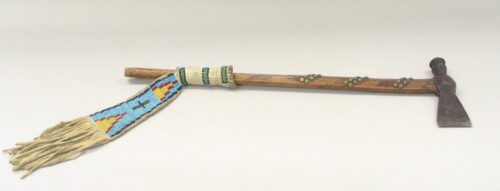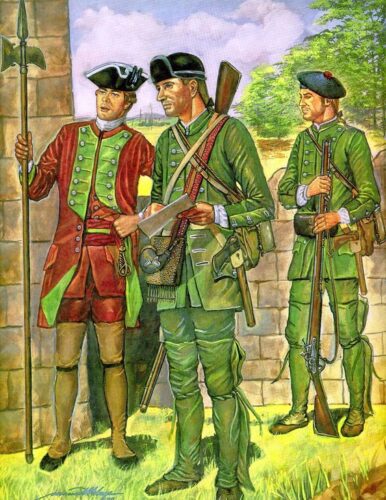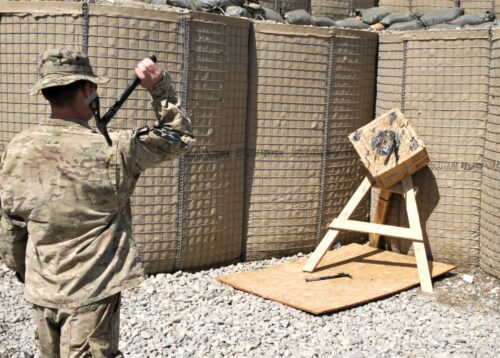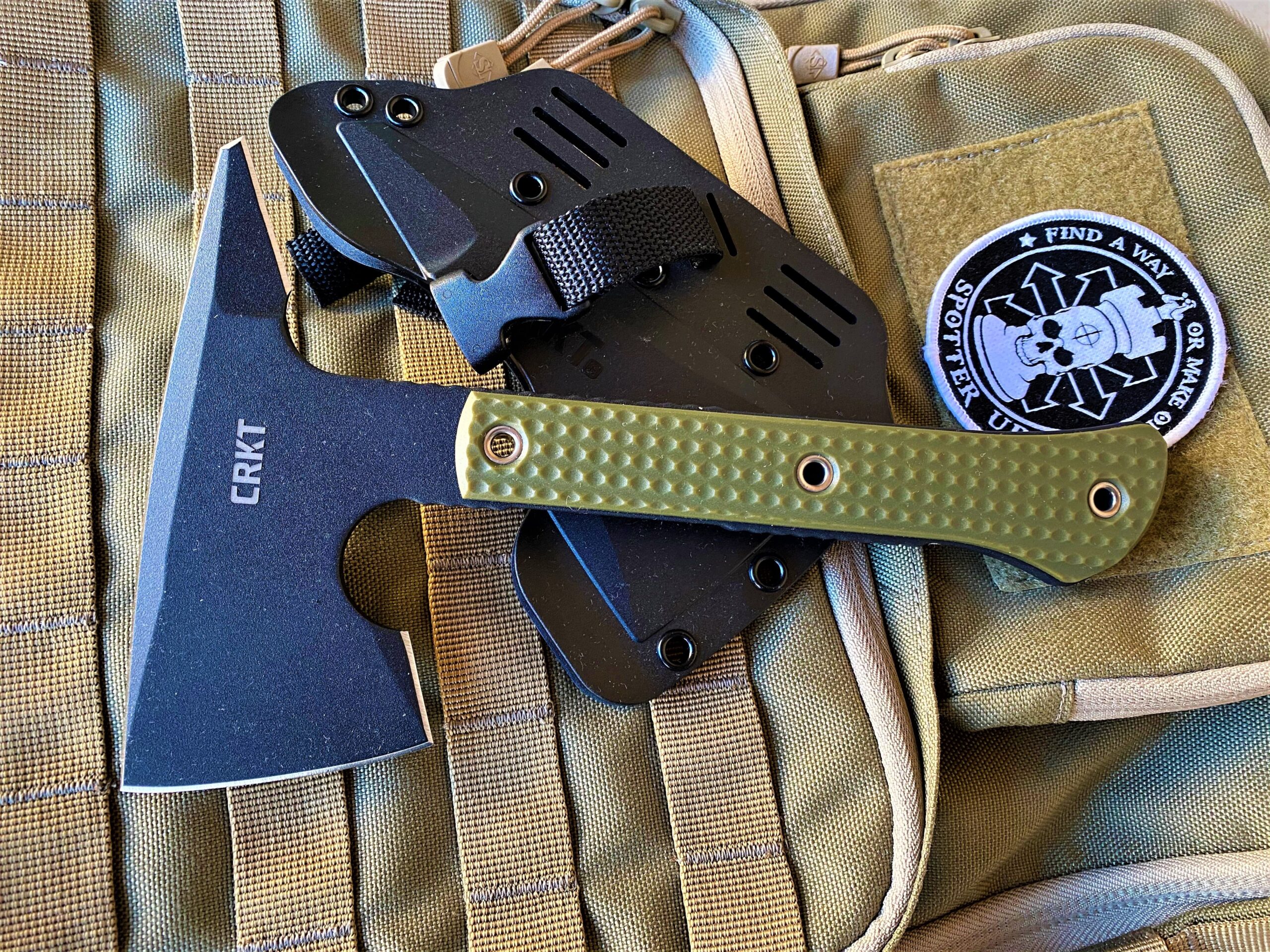CRKT Jenny Wren Compact Tomahawk
Tomahawks have a rich history and symbolism. Tomahawks are versatile tools and weapons that have been used by various cultures for centuries. The word “tomahawk comes from the Native American Powhatan (West Virginia Algonquin) word “tamahaac”. It originally referred to a stone, bone, or antler head attached to a wooden handle with rawhide strips. They were used by Native Americans as weapons, tools, and symbols of status.
The European settlers introduced metal heads to the tomahawks in the 17th century, and some of them also had a pipe bowl on the opposite side of the blade, which could be used for smoking tobacco. These pipe tomahawks were often traded or given as diplomatic gifts between the Europeans and the Native Americans. Tomahawks became an important part of Native American culture and identity, and many tribes decorated them with feathers, beads, or carvings.

One of the most famous users of the tomahawk in colonial history was Rogers’ Rangers, a volunteer militia force of American frontiersmen, raised by Major Robert Rogers. In 1756, Major Rogers recruited nine Ranger companies to fight in the French and Indian War. Ranger techniques and methods of operation employed by Rogers’ Rangers were an inherent characteristic of the American frontiersman. Rogers’ Rangers were highly effective in their operations and became the model for later American Ranger units.
Rogers’ Rangers were skilled in wilderness warfare, scouting, and raiding, and followed a set of rules known as the 28 Rules of Ranging. Rogers’ Rangers carried tomahawks along with their rifles and knives. Tomahawks were light, easy to carry, and could be used for chopping wood, throwing, or hand-to-hand combat. The tomahawks used by Rogers’ Rangers had a distinctive shape, based on historical drawings. They had a long handle, a curved bit (blade), and a spike on the poll (back of the head).
According to some sources, Major Rogers generally preferred the term “hatchet” to “tomahawk.” Based on his journals, it is likely that Rogers did not distinguish between a hatchet and a tomahawk, as long as it met his standards. Rogers’ 28 Rules of Ranging mentioned a hatchet several times:
1. All rangers are to be subject to the rules and articles of war; to appear at roll-call every evening on their own parade, equipped each with a firelock, sixty rounds of powder and ball, and a hatchet, at which time an officer from each company is to inspect the same, to see they are in order, so as to be ready on any emergency to march at a minute’s warning; and before they are dismissed the necessary guards are to drafted, and scouts for the next day appointed.
13. If general, when pushed upon by the enemy, reserve your fire till they approach very near, which will them put them into the greater surprise and consternation, and give you an opportunity of rushing upon them with your hatchets and cutlasses to the better advantage
— From JOURNALS OF MAJOR ROBERT ROGERS (as published in 1765). This is the original version —

One of the earliest accounts of tomahawk warfare in North America comes from Major Rogers. In his journals, he described an incident that took place on Lake Champlain, New York, in 1759, when his men boarded and captured a French vessel by surprise. He wrote:
“We immediately grappled her, and entered with our Tomahawks in our Hands, which soon decided the Contest; for they were so intimidated at our Appearance and Manner of fighting, that they made but a feeble Resistance.”
This passage shows how the tomahawk was used as a weapon of close combat, as well as a tool of psychological warfare, by Rogers’ Rangers and their native allies. The tomahawk was not only effective in striking and hacking, but also in intimidating and demoralizing the enemy.
The tomahawk remained a popular weapon throughout the colonial period, especially among the frontier militias and rifle units. It was also used by both sides during the American Revolution, as some of Rogers’ Rangers joined the British loyalists, while others fought for the Continental Army. The tomahawk symbolized the fusion of European and Native American cultures, as well as the adaptability and resourcefulness of the colonial fighters. The tomahawk was revived as a tactical weapon by some American troops in Vietnam.
The tomahawk was especially popular in the Old West, where it was often carried by frontiersmen, explorers, trappers, and soldiers, as well as Native Americans. The tomahawk had many advantages over other weapons, such as its light weight and versatility.
Today, the tomahawk is still valued for its practical and aesthetic qualities by many enthusiasts. Tomahawks have evolved over time. Modern tomahawks are often crafted from durable steel and have additional features such as hammers, spikes, pry bars, etc. The tomahawk has also become a cultural icon, appearing in movies, books, and video games.

Many companies produce tomahawks that are designed to handle different tasks and environments, from urban to wilderness, such as for breaching doors, breaking padlocks, chopping wood, throwing, self-defense, and emergency situations. Some of the features that make a good tomahawk are the quality of the steel, the shape and balance of the head, the length and ergonomics of the handle, and the durability and design of the sheath.
Choosing a tomahawk is not a simple task, as there are many factors to consider. A tomahawk is a versatile tool. However, not all tomahawks are created equal, and some may suit your needs better than others.
You need to decide what you want to use your tomahawk for. Different purposes require different features, such as blade shape, size, weight, handle material, and balance. For example, if you want to use your tomahawk for throwing, you should look for a lightweight and well-balanced model with a symmetrical blade and a straight handle. If you want to use your tomahawk for chopping or splitting wood, you should look for a heavier and more durable model with a curved blade and a sturdy handle.
You also need to consider your budget and preferences. Tomahawks can range from cheap and basic to expensive and fancy, depending on the quality of the materials and the craftsmanship. You should also think about the style and design of your tomahawk, as there are many options to choose from, such as traditional, modern, tactical, or custom-made. You should choose a tomahawk that fits your personality and taste, as well as your needs.
Do some research and comparison before buying your tomahawk. You can read reviews, watch videos, or ask for recommendations from other users or experts. You can also visit local stores or online shops to see and test different models of tomahawks. You should compare the pros and cons of each option, as well as the prices and warranties.
Whether you are interested in the history, the craftsmanship, or the functionality of tomahawks, you will find them to be a fascinating and impressive tool.
*The views and opinions expressed on this website are solely those of the original authors and contributors. These views and opinions do not necessarily represent those of Spotter Up Magazine, the administrative staff, and/or any/all contributors to this site.
